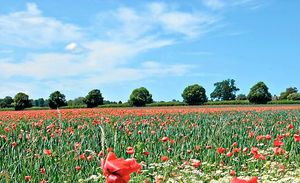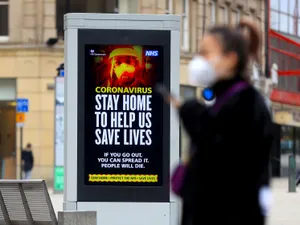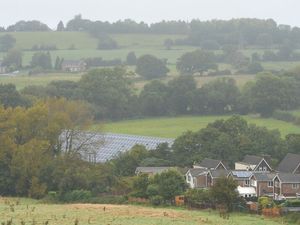Is it OK to pick wild flowers?
Take only memories, leave only footprints, goes the old saying. For decades, it has been a golden rule of countryside etiquette – the picking of wild flowers is strictly forbidden.

But that could be about to change if one of the UK's largest conservation charities gets its way. In an attempt to encourage youngsters to take more of an interest in the natural world, Plantlife UK has produced a list of wild flowers it is ok to pick – and is actively encouraging youngsters to take them home as part of its spring Wildlife Hunt, which was launched at Easter.
Marian Spain, chief executive of the charity, accepts that the call may ruffle one or two feathers in conservation circles. But she says the risk is greater still if a generations of youngsters grows up with little interest in the natural environment.
"We understand that this might sound a bit unusual from a conservation charity, we work very hard to save flowers and keep them growing, but actually wild flowers are quite resilient and picking one or two from a big patch won’t actually harm that population," she says.
"We've published a list of 12 that are very common and very easy to recognise and also a code of conduct on what to do and we understand one of the reasons we are publishing this is because people are going to ask us, they are confused and they don’t know and we think it is important that children do have contact with nature."
But while there are many who would agree that picking dandelions and daisies is, in moderation fairly harmless – and indeed the tradition children making daisy chains is a tradition that goes back further than any countryside code – there is some debate about which flowers it is acceptable for youngsters to pick.
Plantlife says dandelions, daisies, yarrows, common knapweed and meadow buttercups are all acceptable, along with oxeye daises, meadowsweets, cow parsleys, great stitchworts, common dog-violets and red campions.
But Fiona Gomersall, conservation officer at Shropshire Wildlife Trust, has concerns that primroses are also on the list.
"We agree with Plantlife that children should be able to pick some wildflowers for example daisies, dandelions, buttercups, clover and plantains," she says.
"Children should have more access to nature and it is wrong to tell them they cant make little posies of flowers whilst out in the countryside.
"Our concern is that parents may not know the difference between a rare flower and one that is common.
"I would say not to pick primroses in Shropshire and although we may be seeing them in the hedgerows and woodland edges and the moment, they are not that common."
She says a good rule of thumb is that if the flower is present in large numbers, then picking one or two is generally acceptable.
"One should absolutely not pick orchids though, even if there appear to be lots of them," she says.
"Also to be aware that we are sharing these flowers with the bees and other pollinators which have not been doing very well lately."
This latter concern has also sparked criticism from beekeepers, who say that giving the go-ahead to pick certain flowers could lead to more widespread damage to the ecosystems.
Pete Barrar from the National Beekeeping Centre for Wales says: “I think Plantlife do a really great job but I think they’re wrong on this one. We have a Countryside Code that is simple and very clear and it says that we should not damage or destroy or remove features such as rocks, plants and trees from our environment.
“If you go into the woods just now and have a look at the beautiful primroses, when does picking a primrose cease and digging up a primrose start?”
Roy Howells, chairman of Ludlow & Beekeepers Association, also disagrees with Plantlife's advice.
He also questioned whether there was any need to pick flowers in an age where children could take pictures on their mobile phones.
"There is nothing wrong with children going out and identifying wild flowers, but not picking them," he said.
"I think children should be discouraged from picking wild flowers."
Peter Bound, chairman of Shropshire Beekeepers Association, also voices concerns.
"When I was a boy, wild flowers were far more in abundance than they are today, and there wasn't the same threat to wildlife," he says.
"Although children should be encouraged to be interested in wild flowers, the pollinators are under a lot of stress at the moment. We should be protecting every spare space where wild flowers are growing."
Plantlife's Great British Wildflower Hunt is urging the public to search for 68 different species, and has produced an interactive map where their findings can be logged.
Parents – and children for that matter – may also need to bear in mind that picking the wrong flowers in the wrong place could also see them falling foul of the law.
Dozens of rare or endangered plants are protected under the 1981 Wildlife and Countryside Act, and anybody caught picking them can expect police action, although you are unlikely to find too many of them.
Uprooting wild flowers of any description is also illegal, as is picking flowers from a cultivated flower bed, such as a public display.
Mrs Spain believes, though, that there is a real need to get children engaged with nature once more. If allowing youngsters to take a few blooms back to their mothers is enough to tear them away from their games console, she will be happy.
"We think that if we say to children 'you can't touch flowers, you can't pick them', we turn them off," she says.
"What we want is for people to learn more about wildflowers and know what's around them."




